I'm an amateur grower of about 2 years now and I haven't come across this before. Although, this is my first time trying ScrOG.
Just before I started budding I noticed some of my leaves were starting to get what appeared to be bumps in places on the leaves. I'm 11 days into flower now and the bumps have slowly showed up in more places, not to the point in which they're a huge problem, but I'm growing concerned. The areas with bumps that have been affected the longest have turned necrotic and have left holes in some leaves. In addition to the bumps, some leaves have began to curl down around the edges.
I'm running a 1000w hortilux dual arc with adequate ventilation through the hood, and both in and out of the room. I have used this bulb before for flowering. I'm also running a CO2 Boost bucket for the first time. The light is about 20" from the tops. The room is also about 72 degrees lights on, and 65 lights off with and average humidity of 55%. As far as fert., I use the entire Foxfarm line according to their feeding schedule, and have since I started growing. I do not foliar feed, but I do treat them with Azamax for spider mites, this is another product I'm used to using.
I'm not sure if this plays a factor in this case or not but I have 4 agent oranges, which are unaffected, 4 blue cheese's, 2 of which are affected, and 2 dick twister's, both of which are affected and are the most severely damaged. The four of them are next to each other in the room.
Below are pictures of the problems areas. I've come across a few problems in my growing career but I've never seen this before. Any help at all is greatly appreciated. Hope to hear from you soon! Thanks!
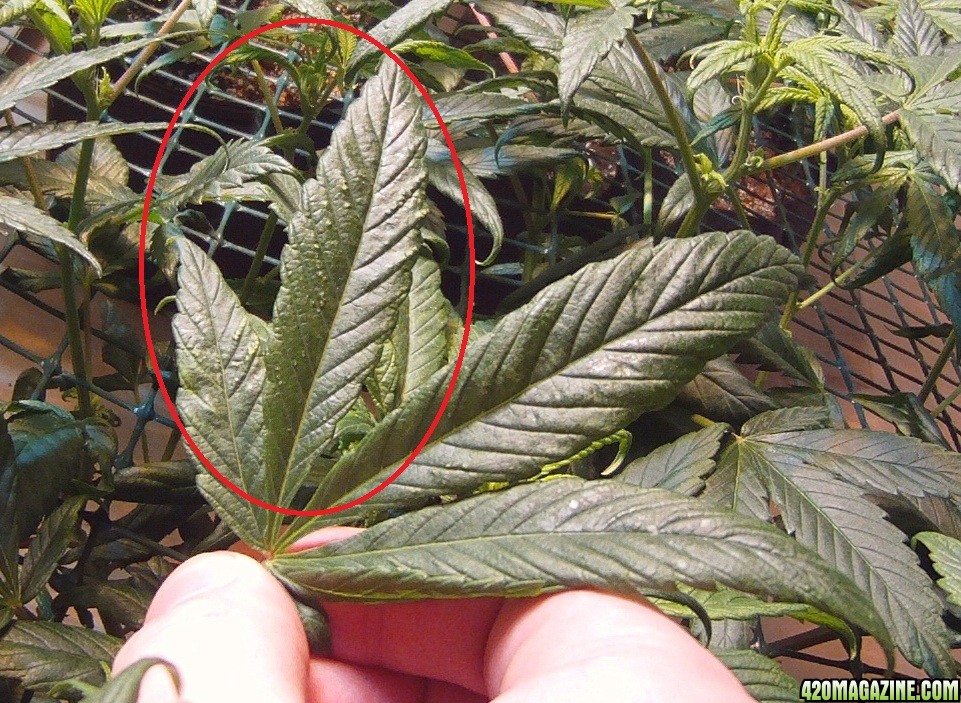
-Bumps on leaf.
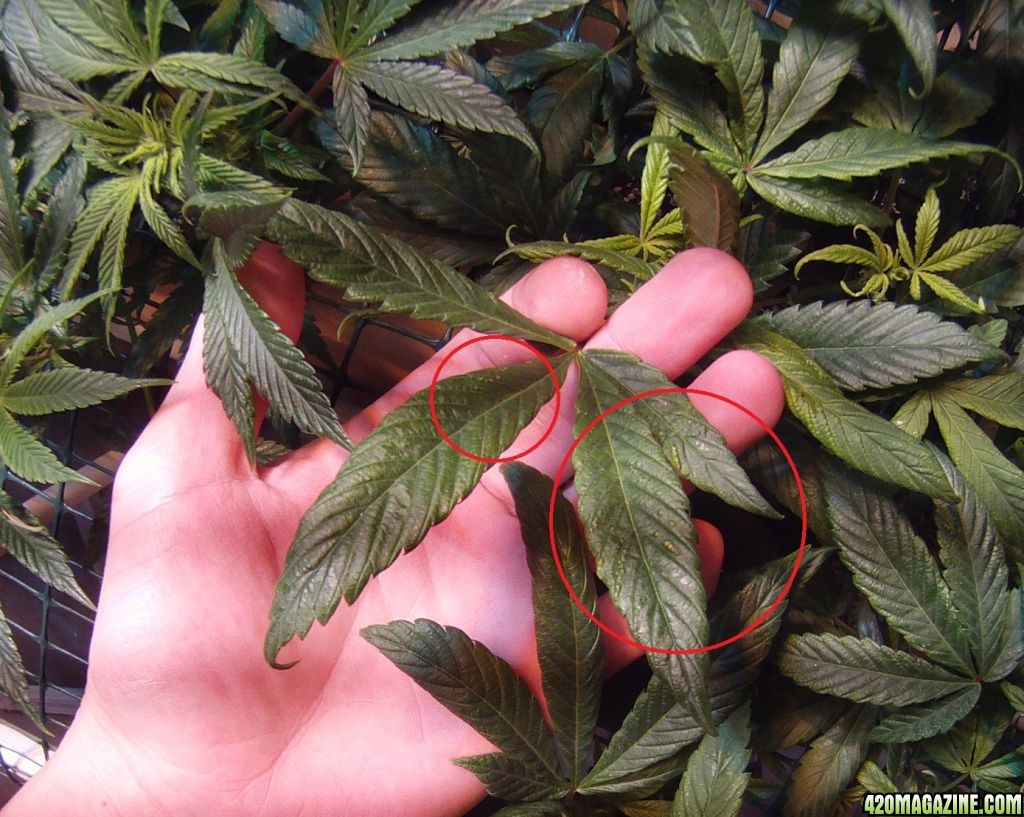
-More bumps.
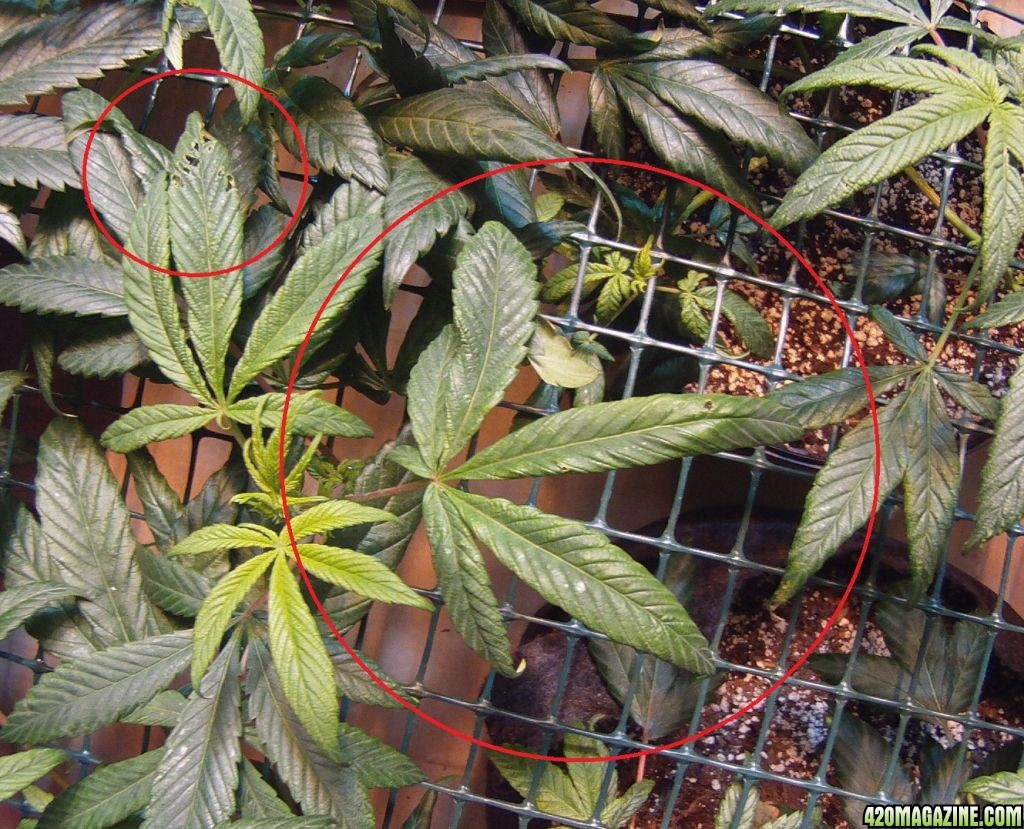
-Holes, upper left. Bumps/curling, center.
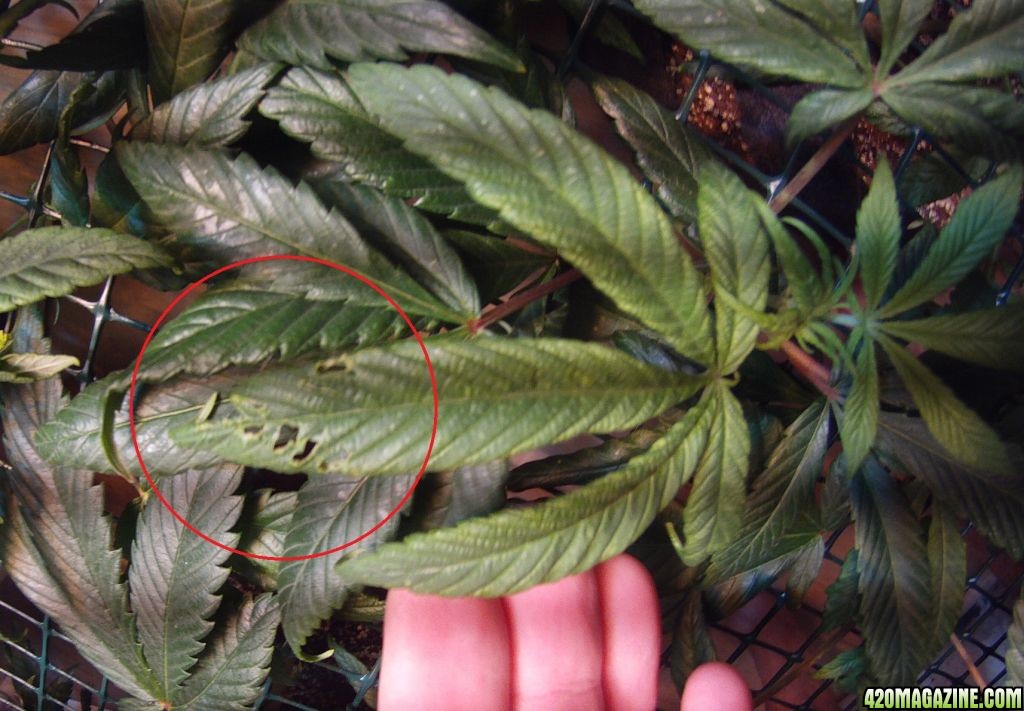
-Holes where bumps were.
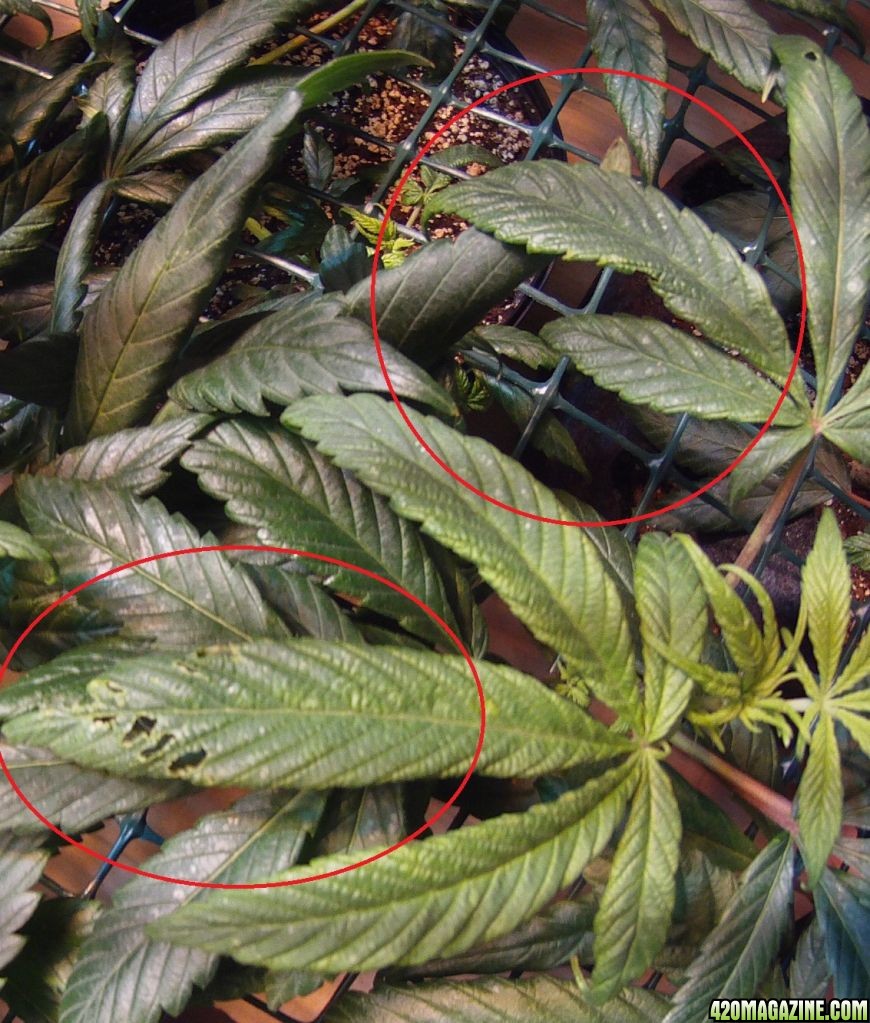
-Holes/curling closer.
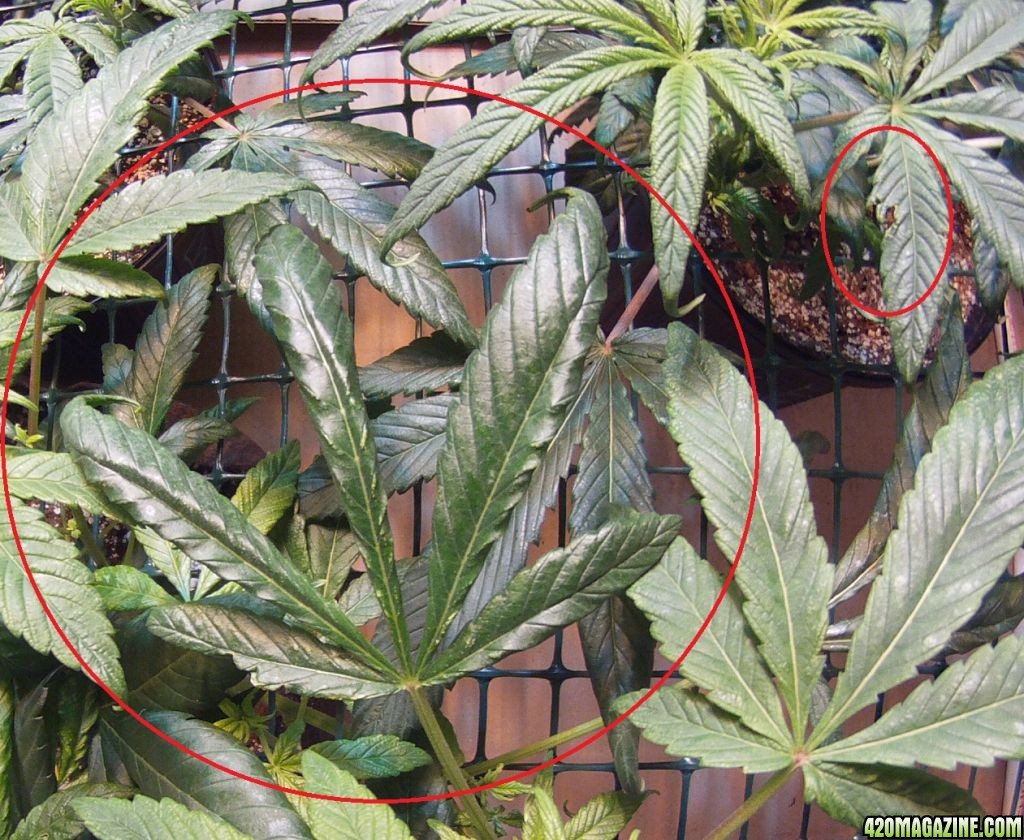
-Curling, center. Holes, right.
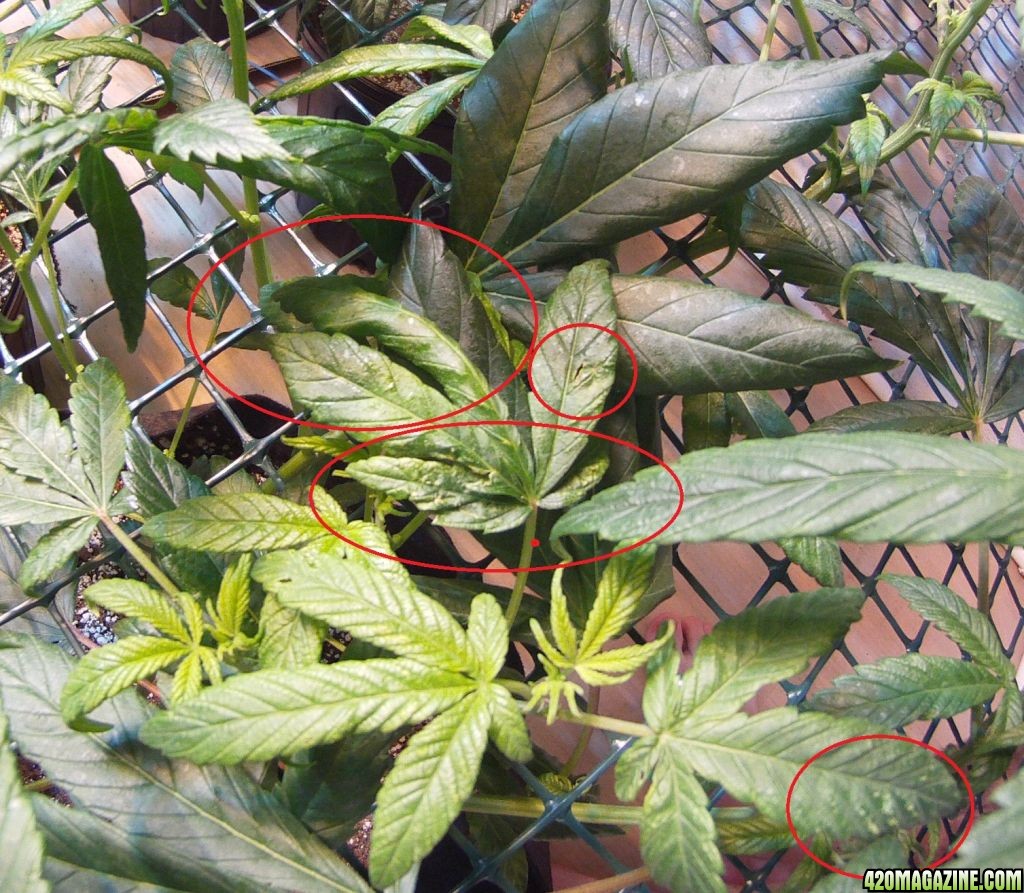
-Bumps, holes, and curling.
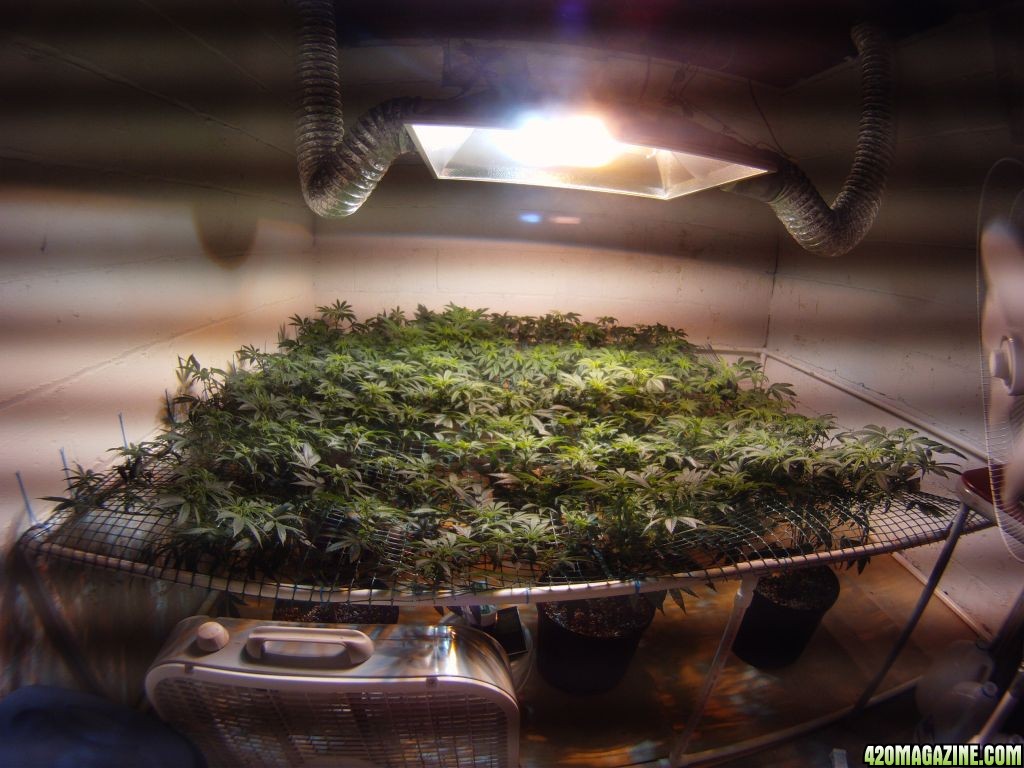
-Wide angle view of the crop, problem area is front right corner.
Thanks again!
Just before I started budding I noticed some of my leaves were starting to get what appeared to be bumps in places on the leaves. I'm 11 days into flower now and the bumps have slowly showed up in more places, not to the point in which they're a huge problem, but I'm growing concerned. The areas with bumps that have been affected the longest have turned necrotic and have left holes in some leaves. In addition to the bumps, some leaves have began to curl down around the edges.
I'm running a 1000w hortilux dual arc with adequate ventilation through the hood, and both in and out of the room. I have used this bulb before for flowering. I'm also running a CO2 Boost bucket for the first time. The light is about 20" from the tops. The room is also about 72 degrees lights on, and 65 lights off with and average humidity of 55%. As far as fert., I use the entire Foxfarm line according to their feeding schedule, and have since I started growing. I do not foliar feed, but I do treat them with Azamax for spider mites, this is another product I'm used to using.
I'm not sure if this plays a factor in this case or not but I have 4 agent oranges, which are unaffected, 4 blue cheese's, 2 of which are affected, and 2 dick twister's, both of which are affected and are the most severely damaged. The four of them are next to each other in the room.
Below are pictures of the problems areas. I've come across a few problems in my growing career but I've never seen this before. Any help at all is greatly appreciated. Hope to hear from you soon! Thanks!
-Bumps on leaf.
-More bumps.
-Holes, upper left. Bumps/curling, center.
-Holes where bumps were.
-Holes/curling closer.
-Curling, center. Holes, right.
-Bumps, holes, and curling.
-Wide angle view of the crop, problem area is front right corner.
Thanks again!



